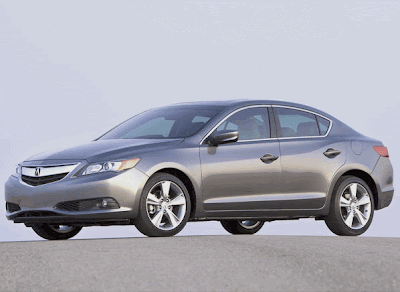Acura's new small sedan, ILX, goes on sale May 22 starting price at $26,795 including shipping.
The automaker says it needs the smaller, this low price model car o attract younger buyers who've grown up in rich homes and don't want to settle for normal car brands, but can't pay for typical luxury car prices.
The base model is powered by a 2-liter, four-cylinder engine rated 150 hp. It comes only with a five-speed automatic transmission. Its fuel-economy rating is 24 mpg in town, 35 mpg on the highway and 28 mpg in combined driving.
Next step up: 2.4-liter four-cylinder, 201 hp, which comes only with a six-speed manual transmission. It starts at $30,095 and comes with some normal features that are extra on the 2-liter entry model. Fuel economy rating is 22/31/25.
A gasoline-electric hybrid with 111 hp starts at $29,795. It has a fuel economy rating of 39/38/38.
The ILX is derived from the Honda Civic, but is a slight bigger and has different engines.
Acura calls the ILX a "gateway" model that lets lower-income; younger buyers who insist on a best nameplate have a chance at buying an Acura.
ILX is smaller and approximately $4,000 less-expensive than the TSX, which has been the brand's starter model.
The automaker says it needs the smaller, this low price model car o attract younger buyers who've grown up in rich homes and don't want to settle for normal car brands, but can't pay for typical luxury car prices.
The base model is powered by a 2-liter, four-cylinder engine rated 150 hp. It comes only with a five-speed automatic transmission. Its fuel-economy rating is 24 mpg in town, 35 mpg on the highway and 28 mpg in combined driving.
Next step up: 2.4-liter four-cylinder, 201 hp, which comes only with a six-speed manual transmission. It starts at $30,095 and comes with some normal features that are extra on the 2-liter entry model. Fuel economy rating is 22/31/25.
A gasoline-electric hybrid with 111 hp starts at $29,795. It has a fuel economy rating of 39/38/38.
The ILX is derived from the Honda Civic, but is a slight bigger and has different engines.
Acura calls the ILX a "gateway" model that lets lower-income; younger buyers who insist on a best nameplate have a chance at buying an Acura.
ILX is smaller and approximately $4,000 less-expensive than the TSX, which has been the brand's starter model.


